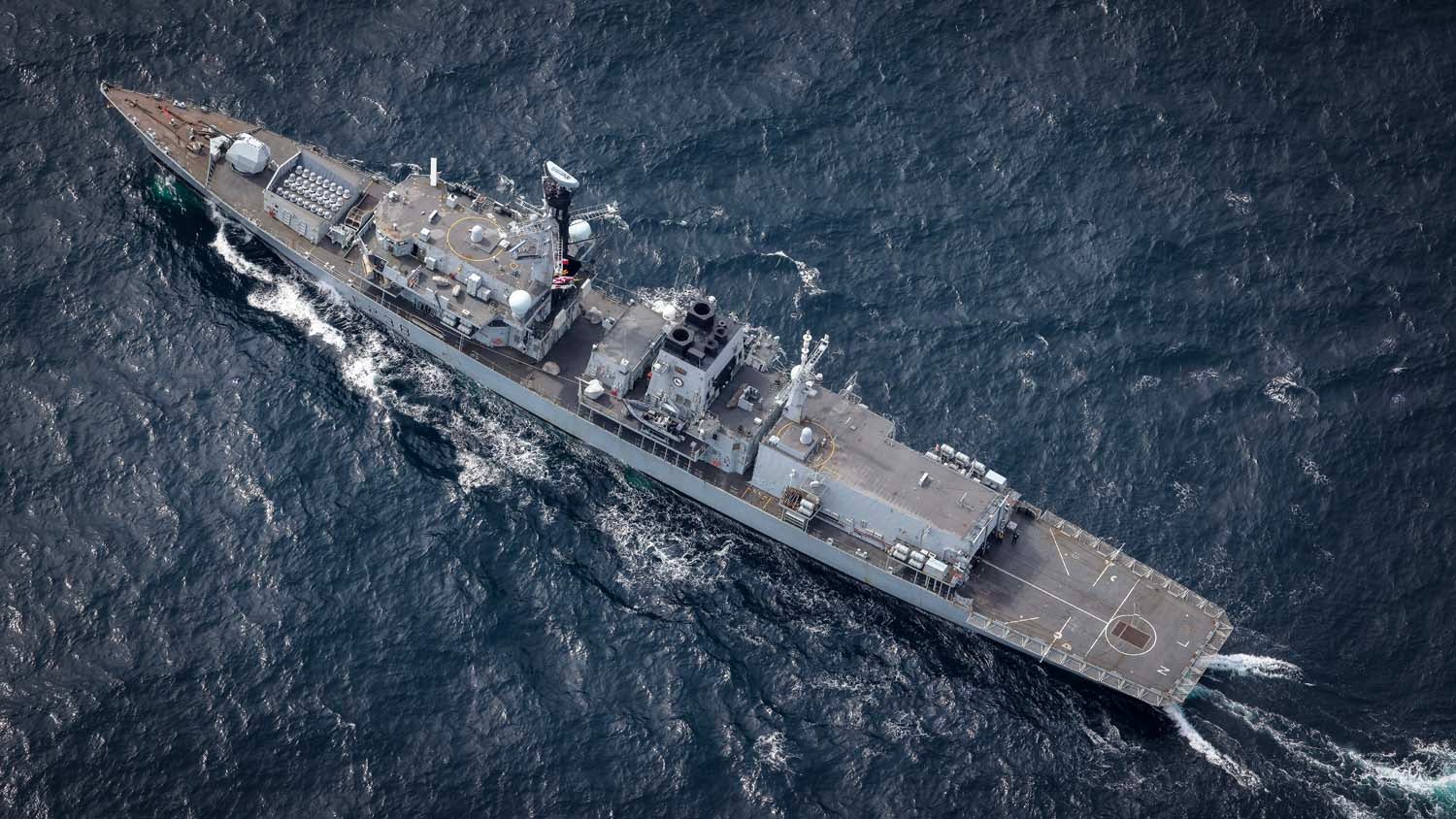
The Royal Navy and NATO have completed their largest anti-submarine warfare exercise in the North Atlantic, designed to enhance allies’ ability to track and destroy threats lurking beneath the surface.
NATO anti-submarine operations
Dynamic Mongoose brought together fifteen surface ships from ten NATO nations, including a Royal Navy submarine, to face down three ‘enemy’ submarines over eleven days.
One of the standout performers in the exercise was the HMS Northumberland, a submarine hunter that utilised the frigate’s advanced sonar and specialist Merlin helicopter from 814 Naval Air Squadron during training.
The Northumberland can hunt the most modern submarines at considerable distances and locate them beyond the range at which a hostile submarine might launch an attack on allied task groups.
Seven maritime patrol aircraft provided further aerial support while Canada, Denmark, France, Germany, the Netherlands, Norway, Poland, Portugal, Spain, the United States, and the UK participated.
“It’s great to be working alongside our NATO allies as part of the alliance’s premier anti-submarine warfare exercise,” said HMS Northumberland’s Commanding Officer, Commander Will Edwards-Bannon.
How well do you really know your competitors?
Access the most comprehensive Company Profiles on the market, powered by GlobalData. Save hours of research. Gain competitive edge.

Thank you!
Your download email will arrive shortly
Not ready to buy yet? Download a free sample
We are confident about the unique quality of our Company Profiles. However, we want you to make the most beneficial decision for your business, so we offer a free sample that you can download by submitting the below form
By GlobalDataResponse to Russia’s growing submarine presence
Dynamic Mongoose provided invaluable training for the Northumberland and her helicopter, operating over the Norwegian Sea for the first time this year.
Water conditions such as salinity and temperature play a key role in the ability to find or locate ‘the enemy below,’ and the skills and experience gained during the exercise will be employed in front-line operations and future exercises. Additionally, it gave younger sailors their first exposure to working with NATO and wider allies.
Keeping the allied task group supplied and ready for action was the Royal Navy tanker, RFA Tideforce, which completed an impressive nine replenishments during the exercises, including for the first time on a Polish frigate, ORP General Tadeusz Kosciuszk.
Russia’s build-up and strengthening of its naval assets in the Baltic Sea and High North are driving Sweden and Poland to invest in submarines and ASW frigates with advanced detection technologies, according to GlobalData’s “The Global Undersea Warfare Systems Market 2018-2028” report.
Tristan Sauer, an aerospace, defence, and security analyst at GlobalData, claimed: “In light of the destruction of the Nord Stream pipelines in the Baltic Sea in 2022 in what Western officials are calling an act of Russian military sabotage, there are obvious concerns regarding the ability to detect Russian submarines which could potentially carry out hostile activities in other areas.”
Tideforce’s flight deck was also home to a submarine-hunting Merlin helicopter from the 814 Naval Air Squadron, which completed numerous sorties supporting the exercises.
According to the “UK Defence Market 2022-2027” report, the Royal Navy maintains a presence in the North Atlantic. It is part of the Standing NATO Maritime Group 1 in the Atlantic and Mediterranean and Joint Expeditionary Force (Maritime).
Operations in these waters closer to home have become increasingly important due to the conflict in Ukraine.
The successful conclusion of Dynamic Mongoose means that Royal Navy and NATO warships are better prepared to hunt underwater threats in the North Atlantic. The ability to track and destroy enemy submarines is vital in maintaining the region’s security and ensuring the safety of allied task groups.
The last time the Dynamic Mongoose anti-submarine warfare exercise took place, was in 2020, with the exercise also taking place off the coast of Iceland.







